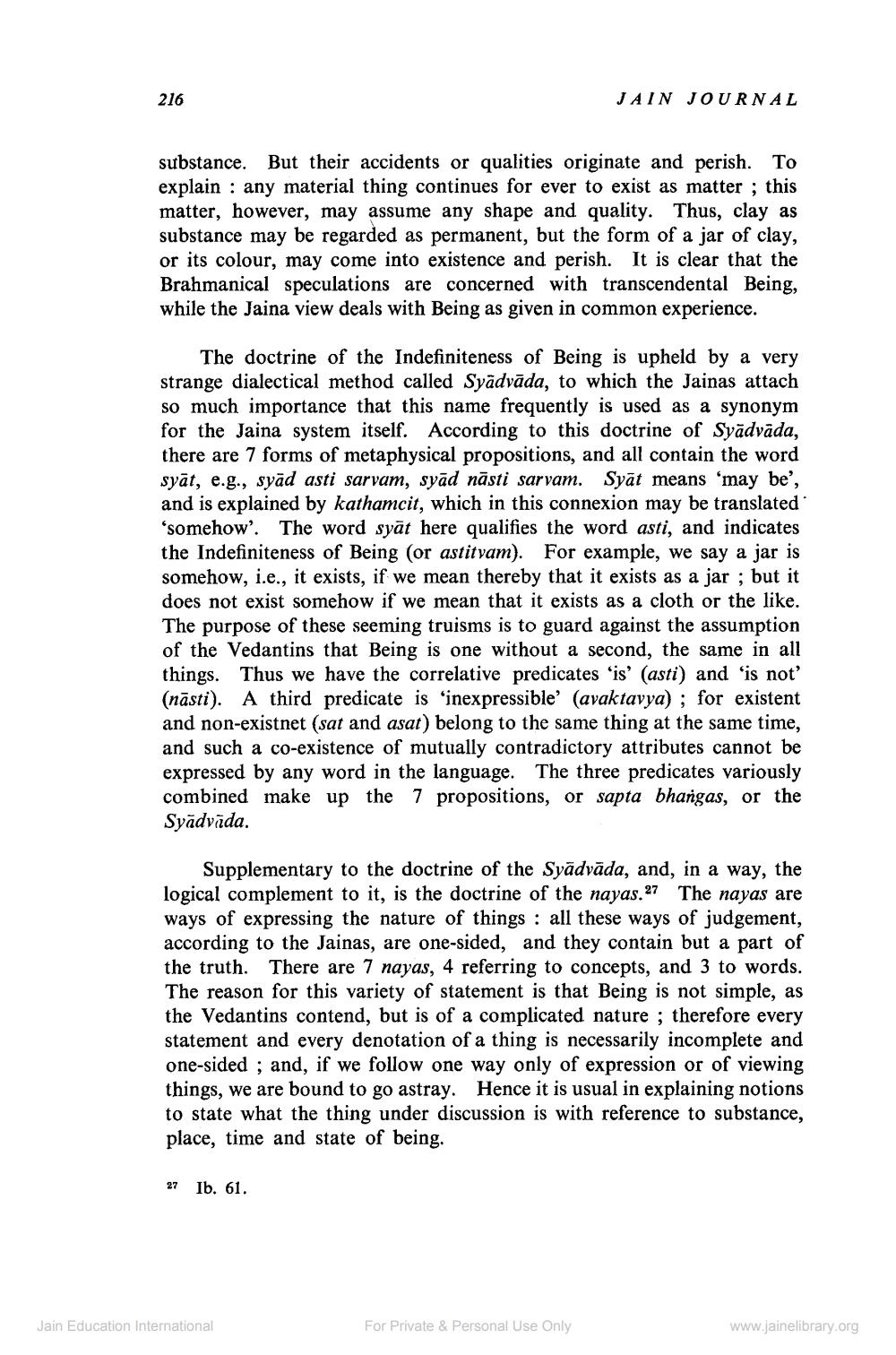________________
216
JAIN JOURNAL
substance. But their accidents or qualities originate and perish. To explain : any material thing continues for ever to exist as matter; this matter, however, may assume any shape and quality. Thus, clay as substance may be regarded as permanent, but the form of a jar of clay, or its colour, may come into existence and perish. It is clear that the Brahmanical speculations are concerned with transcendental Being, while the Jaina view deals with Being as given in common experience.
The doctrine of the Indefiniteness of Being is upheld by a very strange dialectical method called Syādvāda, to which the Jainas attach so much importance that this name frequently is used as a synonym for the Jaina system itself. According to this doctrine of Syādvāda, there are 7 forms of metaphysical propositions, and all contain the word syāt, e.g., syād asti sarvam, syād nāsti sarvam. Syāt means 'may be', and is explained by kathamcit, which in this connexion may be translated 'somehow. The word syāt here qualifies the word asti, and indicates the Indefiniteness of Being (or astitvam). For example, we say a jar is somehow, i.e., it exists, if we mean thereby that it exists as a jar ; but it does not exist somehow if we mean that it exists as a cloth or the like. The purpose of these seeming truisms is to guard against the assumption of the Vedantins that Being is one without a second, the same in all things. Thus we have the correlative predicates 'is' (asti) and 'is not' (nāsti). A third predicate is 'inexpressible' (avaktavya); for existent and non-existnet (sat and asat) belong to the same thing at the same time, and such a co-existence of mutually contradictory attributes cannot be expressed by any word in the language. The three predicates variously combined make up the 7 propositions, or sapta bhangas, or the Syādvāda.
Supplementary to the doctrine of the Syādvāda, and, in a way, the logical complement to it, is the doctrine of the nayas.27 The nayas are ways of expressing the nature of things : all these ways of judgement, according to the Jainas, are one-sided, and they contain but a part of the truth. There are 7 nayas, 4 referring to concepts, and 3 to words. The reason for this variety of statement is that Being is not simple, as the Vedantins contend, but is of a complicated nature ; therefore every statement and every denotation of a thing is necessarily incomplete and one-sided ; and, if we follow one way only of expression or of viewing things, we are bound to go astray. Hence it is usual in explaining notions to state what the thing under discussion is with reference to substance, place, time and state of being.
27
Ib. 61.
Jain Education International
For Private & Personal Use Only
www.jainelibrary.org




